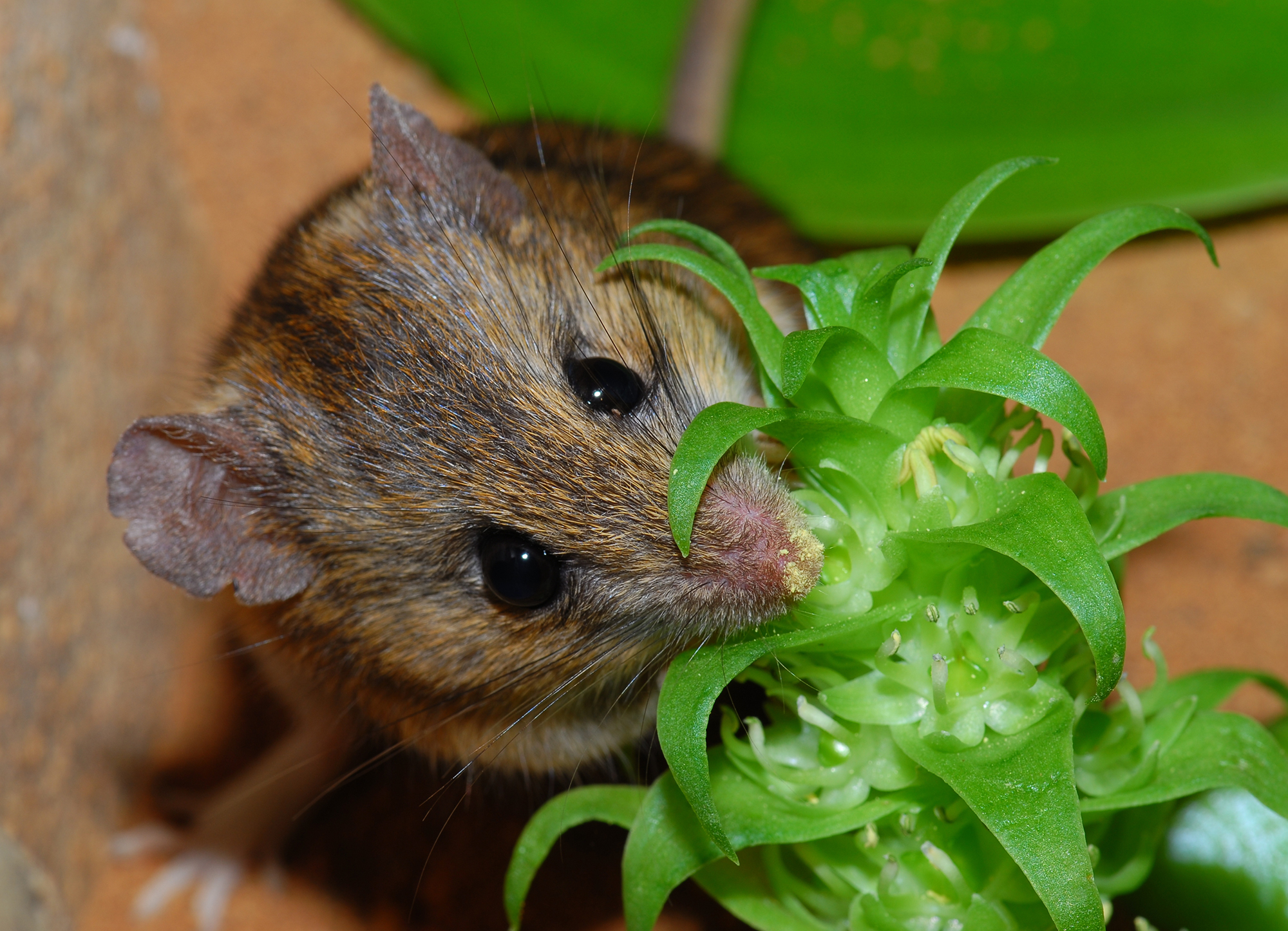
Petra Wester’s charming shot of a Namaqua rock mouse (Aethomys namaquensis) lapping the nectar of the Pagoda Lily (Whiteheadia bifolia), wowed the judging panel for this year’s BMC Ecology image competition. In this Q&A we find out more about the woman behind the lens and her winning entry.
Fascinated by nature as a child, Petra Wester went on to study biology, interested in the interactions between plants and animals. She spent many nights on the South African Sevilla rock art trail to study the Namaqua Rock mouse, hoping to capture a rare phenomenon, mouse pollination of the Pagoda Lily.
“Nectar is a snack (sticky in this case) for the mice, such as chocolate for us.” Petra’s live-action shot of a mouse having a midnight snack on pollen is the first evidence of this interaction. As it licks the nectar, its snout gets dusted with pollen. As it continues snacking, the mouse’s snout touches the stigmas of the flowers and this is the beginning of the pollination.
Taking this photo at night must have been a challenge – how did you set up your camera to capture this behaviour?
“As mice mostly are nocturnal, the observations had to be carried out in the dark. Although the few South African publications on the subject stated that it is virtually impossible to observe mice in the field at night, this did not discourage me, on the contrary… I crouched between the rocks, covered with several layers of clothes as it was very cold, armed with headlamp (covered with red plastic foil), SLR camera and flash , about two to five metres away from the plants – and waited.
“I was rewarded soon, suddenly the mice appeared on the scene and darted to the flowers of the Pagoda Lily. First I was worried that the mice will be discouraged by me and the light. However, they got used to this very quickly, later I even could use the torch without the red foil.”
What about the scene particularly interested you?
“In contrast to other studies that relied on indirect evidence, or using automatic surveillance systems, I intended to observe flower visitors ‘live’. My aim was to observe which animals were attracted by the flowers and whether the animals are potential pollinators. I wanted to observe the interactions in detail, e.g. seeing whether the mice lick the nectar, whether pollen is deposited on the mice, etc.”
Why did you enter this image in the competition, and how do you feel now you’ve won?
“I submitted this picture as I think pollination of flowers by mice is a rare phenomenon and not well known. Most people know that bees, and maybe other insects or birds act as pollinators, but have never heard about mice.
“I am very happy about winning the competition. Thank you! Maybe this contributes to spreading knowledge about this rare, but amazing interaction, how useful mice can be, and that areas with such natural curiosity and diversity should be protected.”
You can find out more about why this image won our competition and view all the winning images in our editorial.
Comments